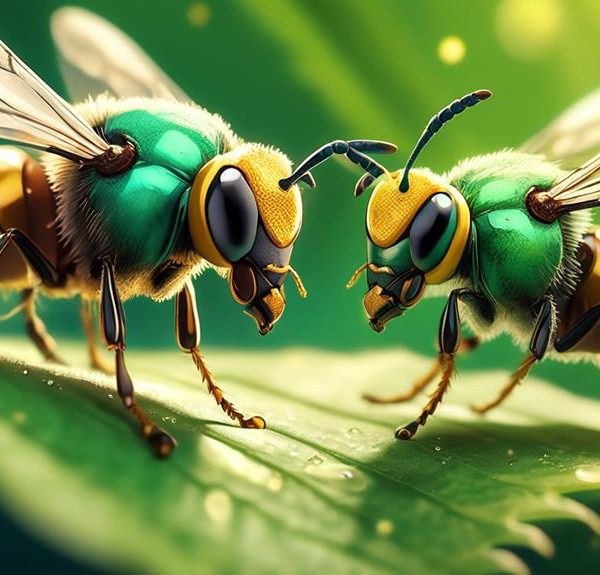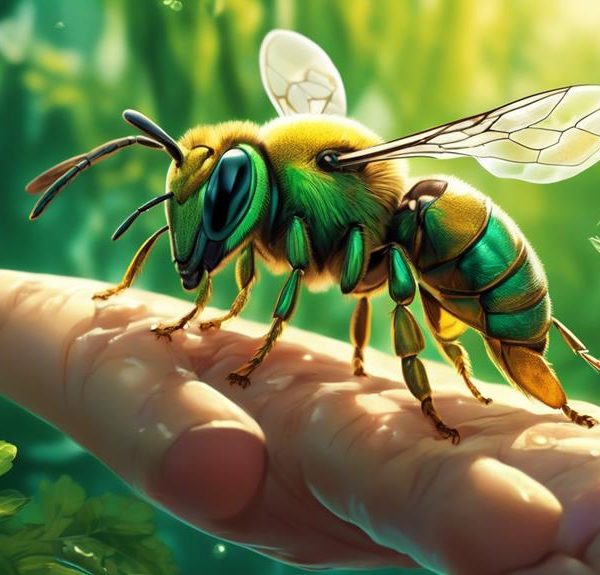Peek into the world of plants that naturally repel sweat bees, enhancing your gardening experience with our eco-friendly solutions.
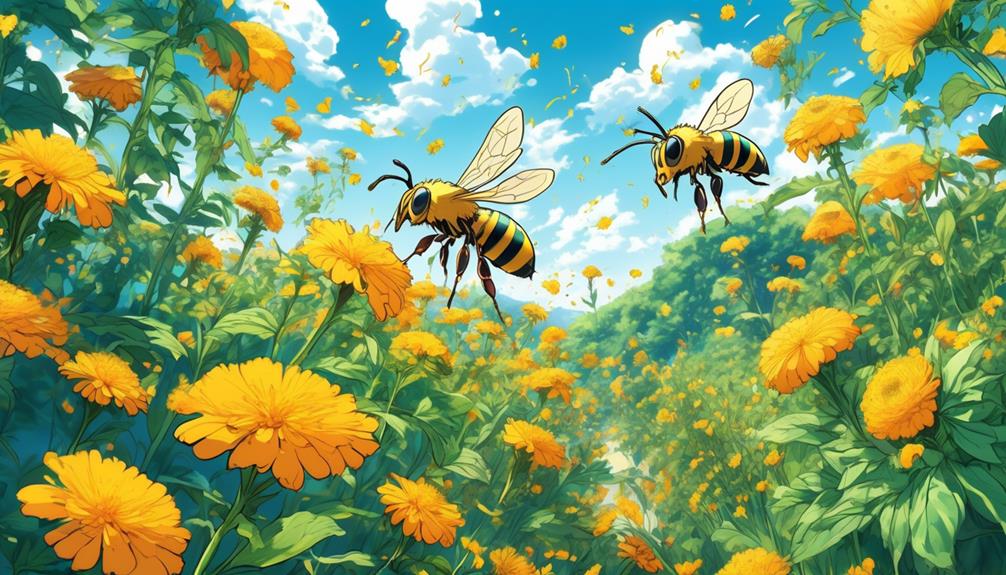
What Plants Keep Sweat Bees Away
Imagine a quiet morning in your garden, the sun gently warming your skin, the sweet scent of blooming flowers wafting in the air. But instead of enjoying this serene moment, you're swatting away sweat bees attracted to your perspiration.
As a gardener, you're aware that these small bees play a vital role in pollination yet their unwelcome attention can make your outdoor experiences less enjoyable.
You're intrigued, aren't you, to discover which plants can act as natural deterrents, creating a peaceful coexistence between you and the sweat bees?
Let's explore this intriguing topic together, shall we?
Key Takeaways
- Sweat bees are attracted to human sweat but can be repelled by certain plants such as mint, marigold, and basil.
- Choosing the right plants can help keep sweat bees away and maintain a vibrant garden.
- Plant selection can also impact other insects and wildlife in the garden, so striking a balance is important.
- Proper care and attention, such as avoiding overwatering and providing enough sunlight, are necessary to maintain healthy and effective bee-repelling plants.
Understanding Sweat Bees Behavior
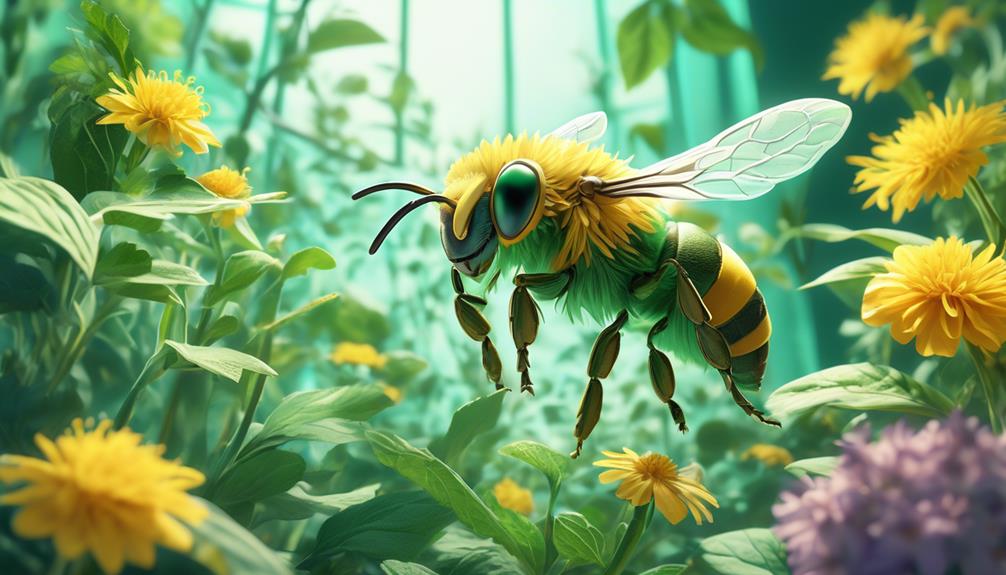
To effectively ward off sweat bees, you'll first need to understand their behavior and what attracts them. Unlike other bees, sweat bees are attracted to human sweat. They're not just after your perspiration for its salt content, but they also find the moisture beneficial. Particularly in hot, dry seasons, you're more likely to encounter them.
These bees are solitary creatures. Each female builds her own nest, often in sandy soil. They're not aggressive by nature, but they'll sting if threatened or squashed. Despite their annoying habit, they're beneficial pollinators for your garden.
You'll also need to understand their life cycle. In spring, female sweat bees emerge from the nest, mate, and then find a suitable location for their new nest. They lay eggs in these nests and provide them with pollen and nectar. The eggs hatch into larvae, which feed on the provided food until they pupate and emerge as adults.
Understanding their behavior and life cycle is key to warding off sweat bees. Once you know what attracts them, you can take steps to make your environment less appealing. This way, you can enjoy your time outdoors without the constant buzz and threat of stings.
Importance of Plant Selection
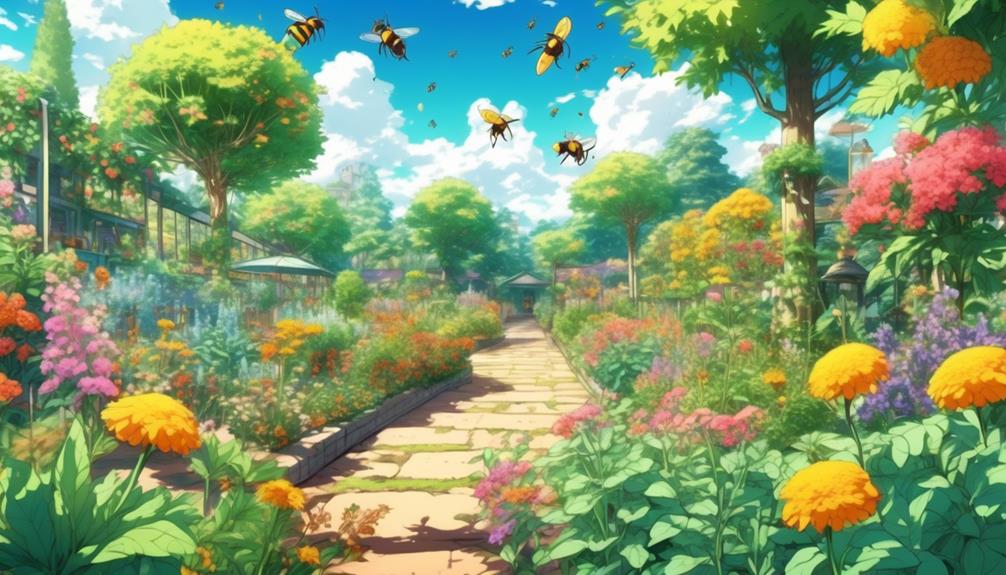
Choosing the right plants for your garden plays a crucial role in keeping sweat bees at bay. It's not just about aesthetics or personal preferences; your choice can impact the bee population in your surroundings. Sure, sweat bees can be a nuisance, but remember, they're important pollinators. Striking a balance is key.
You don't have to sacrifice a beautiful garden to avoid sweat bees. There's a wide variety of plants that these bees don't find attractive. Opt for these, and you'll still have a vibrant, colorful garden without the unwanted buzzing guests.
Your plant selection also influences other insects and wildlife in your garden. It's a domino effect; if you choose plants that repel sweat bees, you might inadvertently attract or deter other species. So, carefully consider your options before making a decision.
Top Plants That Repel Sweat Bees
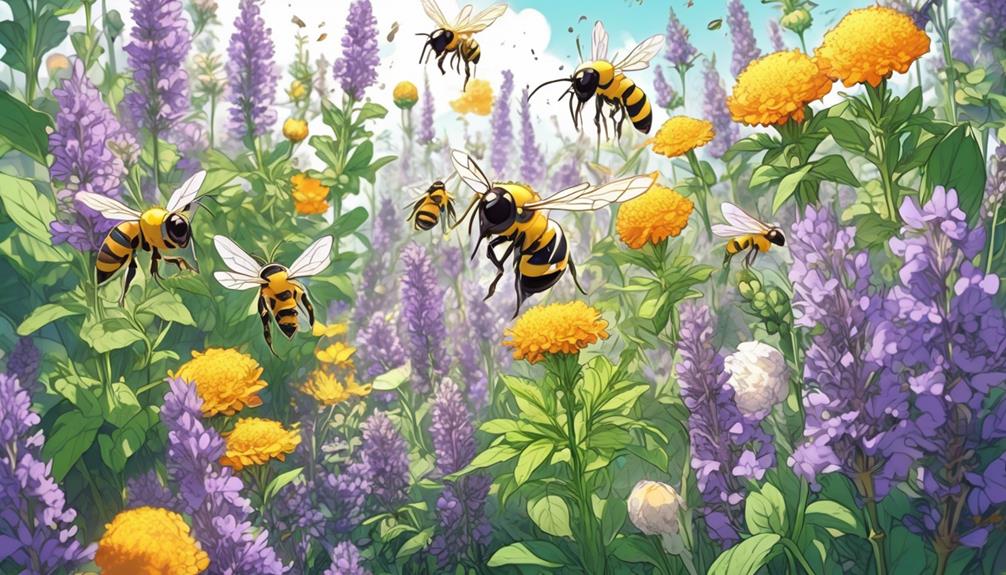
Now, let's explore some of the top plants that can help you keep sweat bees at bay while still maintaining a thriving garden. These plants aren't just deterrents; they'll also add beauty and diversity to your green space.
Here are three top choices:
- Mint: This aromatic herb not only repels sweat bees but also adds flavor to your kitchen.
- Spearmint
- Peppermint
- Lemon Mint
- Marigold: This vibrant flower is a potent sweat bee deterrent. Its bright colors will also beautify your garden.
- French Marigold
- African Marigold
- Triploid Marigold
- Basil: Besides being a tasty addition to your dishes, basil is an effective sweat bee repellant.
- Sweet Basil
- Thai Basil
- Purple Basil
Tips for a Bee-Free Garden

Before you dive headfirst into planting, it's crucial you understand the best practices for creating a bee-free garden. Consider what you're growing and where you're growing it. Sweat bees are attracted to certain plants, so you'll want to avoid these in your garden. Opt for those that repel these bees, like mint and marigold.
Avoid bright colors in your garden decor, they attract bees. Instead, go for neutral shades. Bees also love water, so don't leave standing water in your garden. Regularly empty out birdbaths, buckets or any other water-holding containers.
Don't forget your compost and trash! Make sure they're properly sealed. Sweat bees are attracted to organic waste, so keep your compost bin closed and your trash cans covered.
In essence, you're playing a delicate balancing act. You want a thriving garden, but you also don't want to create a sweat bee haven. It's all about making smart choices with your plants, décor, and maintenance routine.
Following these tips should help you cultivate a bee-free garden, letting you enjoy your outdoor space in peace.
Maintaining Your Bee-Repelling Plants
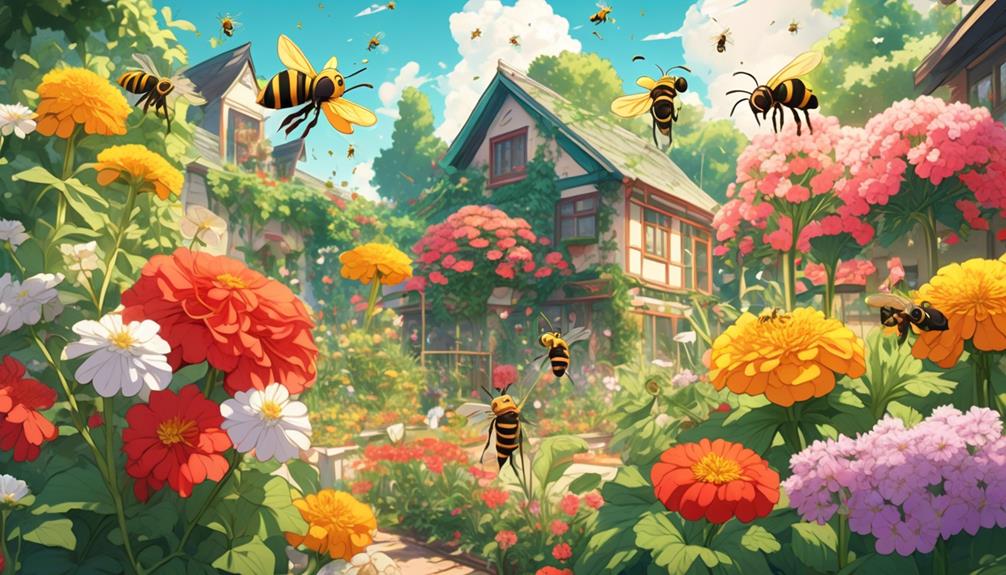
You've got your bee-repelling plants in the ground, but keeping them healthy and effective requires consistent care and attention. Just like any other plant in your garden, they need proper water, sunlight, and nutrients to thrive.
Here are some tips to help you maintain your bee-repelling plants:
- Watering
- Don't overwater, it could lead to root rot. The soil should be moist but not soaked.
- Underwatering can also be harmful. If the soil feels dry to the touch, it's time to water.
- Sunlight
- Most bee-repelling plants need full sun. Make sure they get at least 6 hours of sunlight every day.
- Too much shade can stunt growth and reduce the plant's repelling properties.
- Nutrition
- Use organic compost or a slow-release fertilizer to provide necessary nutrients.
- Avoid over-fertilizing, it can burn the roots and weaken the plant.
Conclusion
So, you've got the lowdown on sweat bees and how to steer clear of them.
By wisely choosing plants like mint, geraniums, and marigolds, you can maintain a bee-free garden.
Remember to care for these plants properly to keep their bee-repelling properties strong.
With these tips in mind, you're well on your way to enjoying a garden that's buzzing with beauty, minus the unwanted guests!

